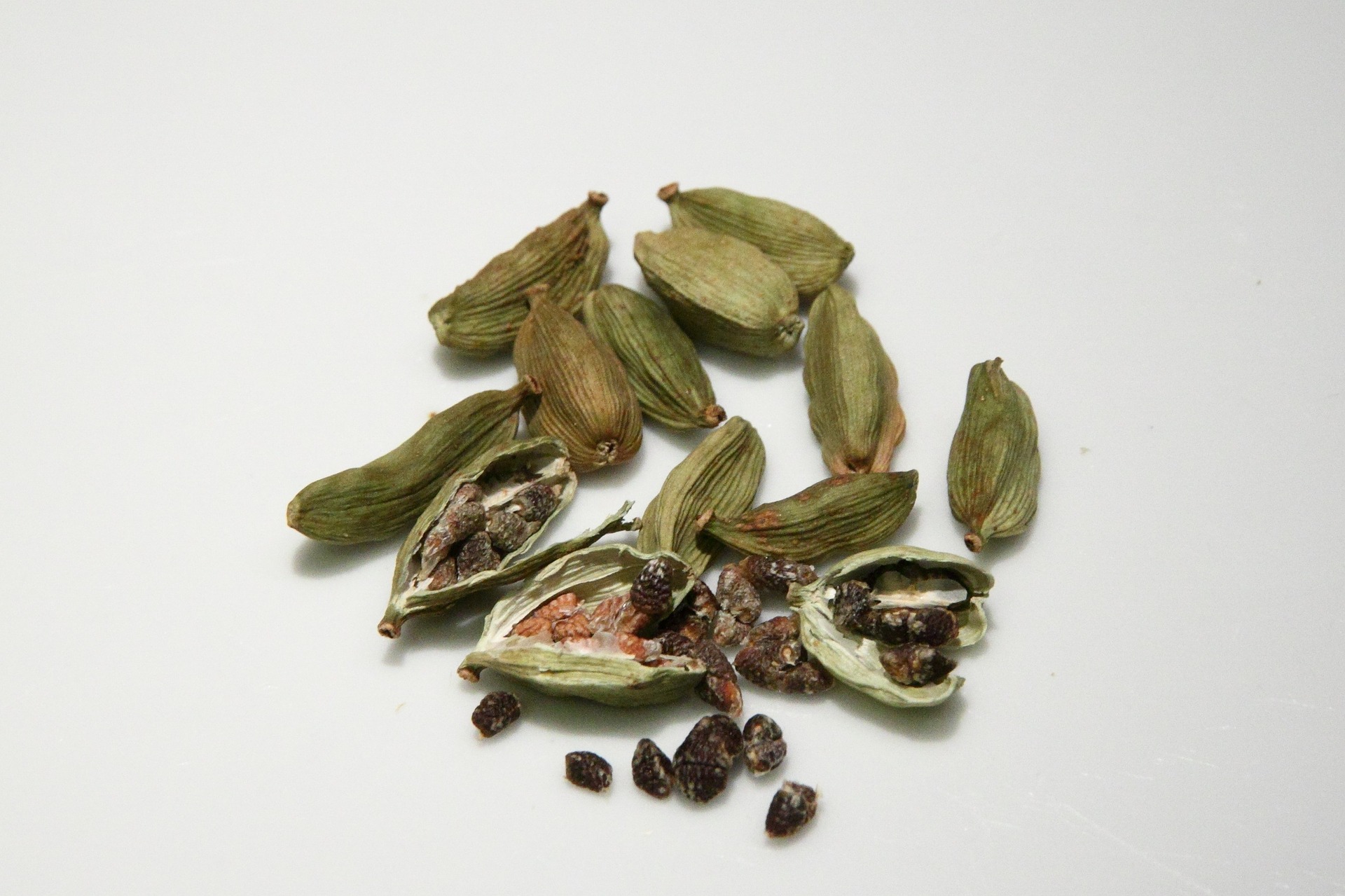
Cardamom (Elettaria cardamomum)
Plant:
Cardamom is native to south-eastern India and belongs to the Zingiberaceae family, just like ginger. The cardamom plant has large greenish leaves resting on small trunks that reach up to three meters in height. Its oval-shaped fruit appears, after being dried, in a greenish tone, in which inside the seeds are so coveted. It is these small grains of black or brown color – it depends on the species of Cardamom, green (Elettaria) or brown, white and red (Amomum) that have different levels of cineol and limonene, which gives the aromatic intensity – that offer us a sweet aromatic flavor, refreshing, intense, with hints of mint and citrus and slightly peppery, widely used in cooking, especially Indian.
Cardamom has also long been used as a medicine due to its powerful properties. The ancient Egyptians chewed cardamom seeds to clean their teeth, the Greeks and Romans made perfumes, the Arabs consumed them as an aphrodisiac and the Indians to fight against obesity.
Cardamom seeds can be made into powder or oil. It is a spice that can have a high market value if it is green cardamom, the so-called real one. When buying the powder, make sure that you don’t have brown cardamom, as it is priced much lower.
Properties:
The properties of cardamom produce, in our body, analgesic, antiseptic, anti-inflammatory, anthelmintic, diuretic, expectorant, laxative, decongestant, stimulant, carminative, purgative, detoxifying, diaphoretic, and sedative effects…
Each 100 grams of Cardamom provides 300 kcal of energy, 608 g of carbohydrate (68 g), 11 g of protein, 28 g of fiber and has no cholesterol.
Cardamom is very rich in magnesium, iron, fiber, calcium, potassium, phosphorus, sulfur, zinc, riboflavin and vitamins C, A, etc. In addition, these seeds still contain a volatile oil (5%) and oils such as eugenol, acetic acid, camphor terpinol, borneol, eucalyptol, limonene, oil essential, pinene, sabinene, phellandrene, terpinene, linalool, myrcene, etc. This menu offers aromatic and medicinal benefits that aid digestion, stimulate metabolism, and stop tumor growth.
Benefits:
- anxiety,
- asthma,
- bronchitis,
- blood circulation,
- headaches,
- aphrodisiac,
- flu,
- inflammation of the eyelids,
- insomnia,
- laxative,
- keeps gums and teeth healthy,
- bad mood,
- nausea,
- skin,
- prevents degenerative imbalances,
- lowers blood pressure,
- cardiovascular system,
- stress,
- cough,
- tuberculosis,
- ulcers,
- vomiting…
How to consume:
In gastronomy, cardamom is used for seasoning and to prepare sweet dishes (cakes and puddings), savory dishes (bread and soups), and hot or cold drinks, such as coffee and soft drinks. Remove the kernels from the bark of the Green Cardamom seed so that you can use them in your cooking or for making an infusion. In this case, put three crushed seeds in a liter of water and let it steep for 10 minutes. The infusion of cardamom helps, for example, difficult digestion.
The chemical industry also consumes cardamom to make medicines, perfumes, cosmetics or essential oils.
Contraindication:
Pregnant or breastfeeding women, but each body is different, therefore it is important to be aware of the incompatibilities, total or momentary, generated by its ingestion.
This text is an awareness. Depending on the season and the moment in which you are, it is up to each Being to feel whether he should consume this food. The dosage and frequency depend on the nature and physical condition of each Human Being.




